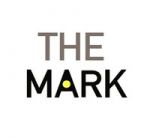Tough questions get short shrift in Lawrence Scanlon’s A Year of Living Generously, an account of volunteering for 12 charities in as many months.
Lawrence Scanlan’s idea was deceptively simple. “I decided I would volunteer with 12 charitable organizations and dedicate a month of hands-on involvement to each one,” the veteran Canadian journalist and community activist explains in the preface to A Year of Living Generously: Dispatches from the Front Lines of Philanthropy.
In January, Scanlan served meals at Vinnie’s, a St. Vincent de Paul Society soup kitchen in Kingston, Ontario. May? Listened to the life stories of people living with HIV/AIDS at Hogar de la Esperanza, a shelter in Costa Rica. October? Built new homes with other Habitat for Humanity volunteers in Katrina-ravaged New Orleans.
Over the course of 2008, Scanlan covered the charitable/non-profit waterfront: he spent time in homeless shelters, prisons, hospices; he worked with environmental good-doers; he volunteered to teach English to troubled aboriginal kids and journalism to eager women at a radio station in Senegal.
Scanlan is an eloquent, perceptive chronicler and companion on his journey, which is as much psychic as physical. He can be amusingly self-deprecating about his own foibles and follies but also painfully self aware of the limitations of what he is doing. When he talks about the people he meets – the helpers and the helped – he writes, as someone once said of Martha Gellhorn, with “a cold eye and a warm heart.”
Still, I had problems with his “suffering sampler” approach.
Although Scanlan is a talented journalist and an experienced volunteer, a month is just too brief a time to spend and expect to come back with real insights. And, because of the writing skills Scanlan brought to his volunteer work, he often gets asked to serve his volunteer stint on communication and newsletter projects. While that gave him journalistic permission to ask personal questions of other volunteers and clients, it also distanced him from the grit-level experiences of most ordinary volunteers.
Scanlan says he came back from his year’s experience “changed.” He is more comfortable around people who are homeless, he says, more conscious of race, more appreciative of just how difficult it is to turn a life around.
I’m not sure I felt changed reading it. What I felt instead was that the year-of core of the book was often at war with Scanlan’s deeper concerns about the intersection of volunteerism, social activism, and social responsibility.
Scanlan clearly does want to tackle his subject’s darker, more difficult questions.
We live in a time when governments demonstrate an unseemly eagerness to rip the social safety net out from under the poorest and the weakest, Scanlan writes in the preface, returning to the idea in his epilogue. Policy-makers do so on the falsely self-serving assumption that armies of ordinary volunteers coupled with grand individual, idiosyncratic (and tax-deductible) philanthro-capitalistic gestures – can you say the Bill and Melinda Gates Foundation “does” malaria? – will fill the void. They can’t.
In such circumstances, he wonders, do individuals doing good really do good, or do their generous gestures “only serve to prop up the status quo.” If volunteer-run soup kitchens and homeless shelters end up making it easier for governments to wriggle away from their responsibilities, “where does this leave collective action against poverty and suffering?”
But those questions mostly get short shrift through Living Generously’s month-by-month storylines. They do occasionally come up in passing. At one point during the February he spends with Toronto’s homeless, for example, Scanlan channels the “crusty” frustration of a street nurse who complains that “this whole pool of [volunteers who feed the homeless] end up feeling good about helping poor people but none are walking into the mayor’s office and complaining.”
In his epilogue, Scanlan returns to this vexing problem. We won’t solve the world’s problems simply by volunteering, he admits. The epilogue, in fact, reads like a reasoned cri de coeur for social activism. But Scanlan also understands that changing government social policy – changing the system – is daunting, perhaps an impossible challenge for most of us to take on.
So “what does one do in the face of human suffering and need?” Scanlan asks rhetorically, then answers: “All I know is this: what one should not do is nothing.”
It is an inadequate, unsatisfying answer. But it is true. Which makes it all the more frustrating.
From The Mark, posted July 26, 2010








 STEPHEN KIMBER, a Professor of Journalism at the University of King's College in Halifax and co-founder of its MFA in Creative Nonfiction Program, is an award-winning writer, editor and broadcaster. He is the author of two novels and eight non-fiction books. Buy his books
STEPHEN KIMBER, a Professor of Journalism at the University of King's College in Halifax and co-founder of its MFA in Creative Nonfiction Program, is an award-winning writer, editor and broadcaster. He is the author of two novels and eight non-fiction books. Buy his books